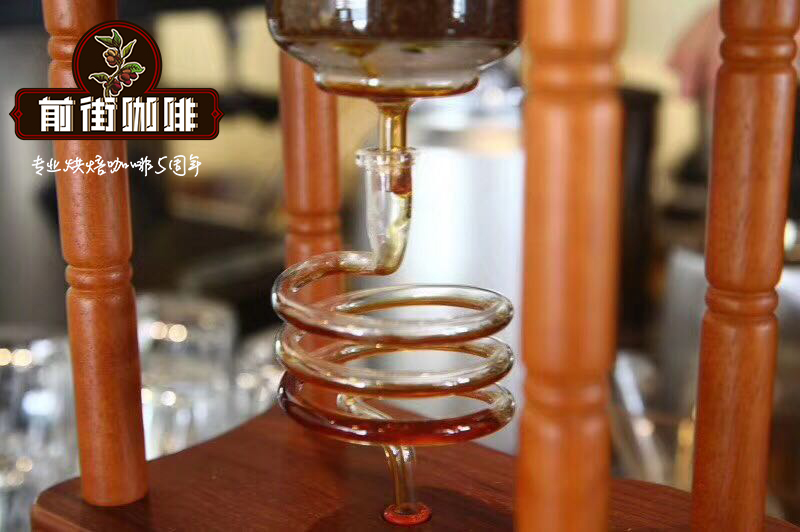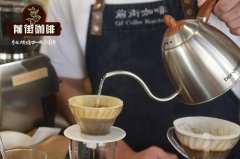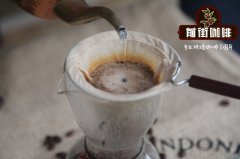What is the special planting environment and taste of La Palma and ElThost can estates in Colombia?

Professional coffee knowledge exchange more coffee bean information please follow the coffee workshop (Wechat official account cafe_style)
What are the characteristics of the growing environment and taste of La Palma and ElThost can estates in Colombia? What kind of treatment?
La Palma and ElThost can (LPET, Chinese name "Palm and Big Bird") are coffee houses and coffee processing plants established in 2011 by three Colombian youths, Elisa Madrinan,Felipe Sardi and Carlos Arevalo.
The estate is located in the central capital of Colombia, Bogota (Bogota), in the province of Cundinamaca (Cundinamarca). Cundinamarca, which belongs to the eastern part of the Colombian Andes, has a number of microclimate zones, with an average temperature of 21 degrees, an average humidity of about 75%, and sunshine of 1600 hours a year, which belongs to volcanic soil, so it is very suitable for planting and animal habitat.
In Colombia, due to economic considerations, many small farmers do not have good technology, equipment and talents, so the quality of production is not guaranteed, and they cannot find good buyers, so they give up growing coffee one after another, and young people would rather leave the countryside. go to the city to find a job with a higher income. Therefore, LPET was established in 2003 to work with about 200 small farmers within a 10-kilometer radius, so that their coffee beans can be fermented in more controlled and innovative ways, showing the high quality and unique potential of Colombian beans, and helping small farmers in their hometown to have more awareness and better income.
LPET's own farmland, purchased in 2011, was originally a 15-year-old desert farmland, about 18 hectares, 1600-1800 meters above sea level, the nearest city is Zipacon, about 50 kilometers from the capital Bogota, near the Apulo River (R í o Apulo), they have divided 14 producing areas with special local conditions. In their own laboratory, they study different fermentation methods to bring us unique coffee.
Another project of LPET-Estate and varieties
Is to grow some rare varieties on the manor, such as geisha, SL-28,Sidra and Typica.
Elisa Madrinan and Felipe Sardi of La Palma and ElT ú can
LPET has experienced staff to pick zero-defect and ripe coffee fruits by hand. Their processing method is Wet mill, and the equipment in the fermentation tank is specially designed for small farms and is suitable for processing small amounts of coffee.
Since they can handle coffee beans with different microlot, they should look at the name of the farmer on the package when buying to know more clearly the origin, origin and variety of coffee beans.
LPET fermentation tank
The fermentation methods used by LPET are the microbes found in coffee fruits, the sugars in the slime of coffee beans, or different cultured bacteria or yeasts. After adjusting different variables (such as temperature, humidity, oxygen content, pH and sugar content), each microbatch (Microlot) has a different display. Three fermentation methods temporarily used by LPET.
1) Lactic acid fermentation-anoxic fermentation lactic acid fermentation (anaerobic)
This method uses lactic acid bacteria to convert the sugar in the slime of coffee beans into lactic acid under the condition of hypoxia. However, in the case of hypoxia, lactic acid bacteria are easily affected by environmental factors such as temperature and pH, so each fermentation process should be properly controlled. This method of fermentation, lactic acid can show the sweetness of coffee, chocolate, butter, wine and other flavor, silk taste.
2) acetic acid fermentation-aerobic fermentation ACETIC FAMMENTATION (Aerobic)
This method uses yeast for fermentation, and the alcohol produced is then converted to acetic acid in an oxygen environment, so coffee beans will have the flavor of wine, orange acid and yellow drupes (such as peaches and plums).
3) mixed / double fermentation
Is to mix the above two methods of fermentation, the flavor will be more complex, coffee beans will show its red berry fruit, with wine flavor, silk taste, and have a long finish.
2) Finca Santuario
Camilo Merizalde, a landowner born in Valle de Cauca, Colombia, has watched adults deal with coffee since childhood and worked as the manager of a Colombian food and beverage factory after graduation in the United States, so he had the opportunity to return to Colombia to buy raw coffee beans. Although Colombia is a high-yield coffee area, it is often ignored, so it is decided to let the world know Colombia's boutique coffee.
In the beginning, Camilo grew coffee on his wife's farm in Popa, and learned from botanists from Japan, the United States, Central America and Colombia to divide the farmland into 266 plots of about 0.25ha each, most of which were named after plants (e.g. Herbana: false bird of paradise, Guayabos: pomegranate) to observe and study the climate and growth of each area.
It is located in the alpine volcanic area with a high altitude of 1890-2010 meters, with a large temperature difference between day and night, which is suitable for growing high-quality coffee and coffee trees on slopes. He named the manor Santuario.
The distance between each row of coffee trees is wide, which can prevent the spread of coffee tree diseases and increase production. In addition, Camilo also grows a large number of leguminous plants (leguminous trees) in agricultural land, which can not only convert nitrogen in the air into nutrients, but also provide shade, wind protection, root protection and soil moisture retention.
Camilo initially intended to be quality-based, planting low-yield, more fragile native lines, such as Typica and Bourbon. Even so, the coffee beans in the cup test results are very excellent. Other rare varieties cultivated include Eugenoides, Geisha, Mibirizi, Mocha, Purpurescens, Sultan Rume, etc.
Camilo Yizhi is looking for the best planting methods, not only looking for different irrigation methods to face the problem of climate change, but even building a large greenhouse to cultivate 26 experimental varieties. In recent years, Camilo has found four natural hybrids in the manor. At the peak of the harvest season, fully ripe coffee fruits are peeled twice a day with a clean, small and simple washing machine. After that, the peeled fruit will be fermented for 35-40 hours without water.
Camilo believes that this dry fermentation is stable and improves the acidity and sweetness of coffee beans. After fermentation, it will be exposed to the sun for 14 days (convex to get up to dry) in a plastic shed (parabolic bed) with anti-UV radiation.
Finca Santuario's first batch of coffee beans were well received in 2005, and since then the beans from the estate have often become competition beans (such as WBC champion Sasa Sestic and 2013 Australian barista champion Matt Perger). The batches that many people know are Finca Santuario Sofia (variety: red bourbon), love elixir Finca Santuario Heliconias (variety: red bourbon), Finca Santuario Guayabos (variety: yellow Typica), Finca Santuario Aquacatillo (variety: red Typica).
3) Caf é Inmaculada
When it comes to Camilo Merizalde, I think of the special boutique coffee series that Intelligentsia Coffee once focused on. That series, launched in 2011 with Camilo Merizalde and his childhood partners Julian,Andres and Santiago Holguin, launched a limited number of rare coffee beans, including Sudan Rume,Laurina and Maragesha.
The Holguin family started the coffee business in 2010 after working in sugarcane plantations in the Valle del Cauca and palm plantations in Nari ñ o.
The farmland is located in Pichnde in the Andes. The advantage is that the soil is fertile, sufficient sunshine and Rain Water, are very suitable for growing coffee. At first, the manor was only about 5 hectares, but now it has 50 hectares, of which 30 hectares grow coffee.
The two estates of Camilo (Finca Santuario and Immaculate Coffee Farm) are apart
The coffee house owned by the Holguin family, collectively known as Immaculate Coffee Farm, consists of three farms: Columbia Cloud Farm (Las Nubes), Holy Farm (Finca Inmaculada), and Finca Monserrat. Grow rare varieties such as Rume Sudan,Eugenoides,Laurina,Gesha,Maragesha.
Jane said that rare varieties
☼ SudanRume (or Rume Sudan RS-510 or RS-510): from the Boma Plateau (Boma Plateau), located in southeastern Sudan, connected to the Ethiopia highlands, is a wetland in the area. It has high-quality disease resistance genes, but the yield is low, and the coffee fruit is relatively small, so it is not a widely planted variety.
☼ Laurina (or Bourbon Pointu): from R é UnionIsland, a volcanic island in the western Indian Ocean and Madagascar (Madagascar) in the east. In a previous article, there was also a brief introduction to Arabica coffee beans with low caffeine and high sweetness.
Bourbon Pointu (bourbon pointed body), it is clearly said that it is a Bourbon species, but the tree species is relatively short, the leaves and coffee fruits are also smaller, the beans are round in the middle and become pointed at both ends, and the bean body is harder.
☼ Maragesha: a natural mixture of Maragogype and Geisha that can only be found in Finca Santuario.
☼ Eugenioides: this bean has only half the caffeine content of the average Arabica and is famous for its sweetness. The coffee tree is relatively short, the coffee fruit is small, and the yield is low. After three years of greenhouse planting in Finca Inmaculada, each tree produces only about 320g of raw coffee beans per year.
Take a look at the three farms
☁ FincaInmaculada
5.12ha, 1670-1700 m above sea level, cultivated varieties Geisha,Sudan Rume,Laurina and Eugenoides.
Shade trees:
Tephrosia (shade trees with gray leaves), Guamos (Inga edulis, a common shade tree in coffee fields), there are more than 300 species, they grow fast and can convert nitrogen into the melon family, guava (Guavas), Carboneros (Calliandra lehmannii, the advantage is large leaves, easy to grow, birds and wild animals will eat its fruit) and lemon tree (simply to provide shade, the fruit produced is edible. )
13.98 ha, high altitude 1700-1800 m, cultivated varieties Sudan Rume,Laurina, geisha, yellow and red Borboun,Castillo and Caturro.
Shade trees:
There are Tephrosia, lemon tree, orange tree, citrus tree, banana tree, banana tree (with the same advantages as plantain: fast growth, easy to grow, edible fruit), and some resistant varieties can inhibit the growth of weeds), Chachafruto (that is, Erythrina edulis, similar to inga, pod-shaped fruit, can convert air nitrogen as nutrients).
11.21 ha, 1750-2000 m above sea level, cultivated varieties Rume, yellow and red Borboun,Geisha,Laurina and Eugenoides.
Shading trees: Tephrosia,Guamos, guava and lemon trees
In addition, organic orchids and vegetables are grown.
WBC champion Sasa Sestic used the Sultan Rume of the estate in the 2015 WBC competition to make more people know them. The coffee beans used at that time were 50% in the sun and 50% in carbon dioxide (Carbonic Maceration). Carbonic Maceration is a common fermentation method of red wine. Las Lubes coffee beans in sealed stainless steel containers use carbon dioxide to form an anoxic environment, which converts the sugar of coffee slime into alcohol and carbon dioxide, thus complicating the flavor of coffee.
Important Notice :
前街咖啡 FrontStreet Coffee has moved to new addredd:
FrontStreet Coffee Address: 315,Donghua East Road,GuangZhou
Tel:020 38364473
- Prev

Flavor characteristics of Ugandan Coffee baked by SL14 in Kawahibi, Uganda
Professional coffee knowledge exchange more coffee bean information please follow Coffee Workshop (Wechat official account cafe_style) Uganda Kawa Cooperative Hibikabewa SL14 Solar Uganda Kawacom Sipi Kabeywa SL14 natural production countries: Uganda Uganda production area: Aigang Mountain Mount Elgon;Kapchorwa Province; East Uganda Eastern Uganda
- Next

Flavor and taste characteristics of coffee beans from Bishop Del Obispo Mountain Farm in Huilan, Colombia
Professional coffee knowledge exchange more coffee bean information please follow the coffee workshop (Wechat official account cafe_style) Columbia Huilan production area-Del Obispo Bishop Mountain Farm coffee beans flavor and taste characteristics? Colombia is currently the third largest coffee producer in the world, after Brazil and Vietnam. It first grew commercial beans in the 1830s and accounted for exports of coffee in the 20th century.
Related
- Detailed explanation of Jadeite planting Land in Panamanian Jadeite Manor introduction to the grading system of Jadeite competitive bidding, Red bid, Green bid and Rose Summer
- Story of Coffee planting in Brenka region of Costa Rica Stonehenge Manor anaerobic heavy honey treatment of flavor mouth
- What's on the barrel of Blue Mountain Coffee beans?
- Can American coffee also pull flowers? How to use hot American style to pull out a good-looking pattern?
- Can you make a cold extract with coffee beans? What is the right proportion for cold-extracted coffee formula?
- Indonesian PWN Gold Mandrine Coffee Origin Features Flavor How to Chong? Mandolin coffee is American.
- A brief introduction to the flavor characteristics of Brazilian yellow bourbon coffee beans
- What is the effect of different water quality on the flavor of cold-extracted coffee? What kind of water is best for brewing coffee?
- Why do you think of Rose Summer whenever you mention Panamanian coffee?
- Introduction to the characteristics of authentic blue mountain coffee bean producing areas? What is the CIB Coffee Authority in Jamaica?

